Want to be a space traveller or a reality TV star? Forget about training, hard work or auditions – just eat KitKats. Fancy paying off the mortgage, or hiring a Premier League footballer? Don’t bother with a job or trying to become an oil millionaire – fill the freezer with Birds Eye products and slurp Coca-Cola instead.
These attention-grabbing prizes make Willy Wonka’s fictional golden ticket giveaway – a tour of his chocolate factory – pale into insignificance. Yet they are just a fraction of an increasingly spectacular haul of giveaways as brand owners search for triggers to motivate consumers to spend. Prizes are now quite literally out of this world, with Nestlé France running a competition earlier this year on its Lighter KitKat wrappers to win a trip into space. The stunt helped gain the new product big launch sales at home and huge media coverage abroad.
Other competitions produce results at a fraction of the cost. So what makes a successful competition? It is hard to imagine today’s shopper being motivated by the top prize in a Kellogg’s contest of 1938 – opening a factory. However, Brains Faggots did somehow tempt hundreds of families to compete for the title of The Faggot Family only four years ago – a reward that brought the winners little more glory than 15 minutes of fame and all the faggots they could eat. Labour-saving household appliances, such as refrigerators, which were popular prizes in the 1950s, have given way to cars and foreign holidays. Brand owners are also now competing to outdo each other on prizes money can’t buy, such as the chance to meet a celebrity.
“Competitions are essentially about adding news value and providing shelf stand-out,” says Graham Hales, executive director of branding consultants Interbrand. “They encourage people to pick up the product and they create excitement when the pack is opened. The costs are relatively controllable and, if you can hit on the right thing at the right time, you can get strong coverage in the media and create a lot of noise.”
Types of competition The Institute of Sales Promotion (ISP) estimates that there are about 30,000 consumer sales promotion offers live at any one time in the UK, ranging from simple send-money-and-proof-of-purchase offers, to free draws, to questions and tiebreaker contests to win fabulous prizes.
The number coming from the grocery arena has stayed pretty static over the past few years, says Edwin Mutton, head of compliance. Although grocery brand owners have turned more to money-off deals such as bogofs, competitions can add greater value in the long run, Mutton claims.
“Free prize draws are not much effort for brand owners,” he adds. “Usually, they will run a raft of promotions at the same time – an offer for a freebie relevant to the target market, with some cost to the participant and tied to proof of purchase, as well as a competition that involves some sort of skill.”
In years gone by, brand owners were not allowed to insist consumers buy their product in order to enter a free prize draw, but regulations introduced in 2005 mean they now can. This has made the free prize draw a much more attractive option for brand owners and it is great if they want to gather a nice big database, says Mutton.
“If you want fewer entries but a song and dance at point of sale, you invent a competition. But the more you ask people to do, the more attractive you have to make the prize – or you won’t get the response.”
Making money costs money
The costs of running a consumer competition vary enormously, depending on the size of the prize pot. Mutton estimates that administration, packaging alterations and postage can total around £1m, while a further £1m is needed to buy the services of a handling house to deal with entries. And that’s before the advertising budget is considered.
Today’s more sophisticated giveaways reflect changing consumer aspirations and a growing desire on the part of brand owners to target the right audience. And the latest raft of competitions are not just being driven by the grocery companies. Movie, TV and sports companies, premium consumer goods suppliers, even tourism authorities, have all woken up to the idea that consumer contact via the supermarket shelf could present a shortcut into people’s homes. This has led to a number of partnerships being created with the grocery industry.
Properly targeted offers can really cement a grocery brand’s relationship with its market. Mars’s Galaxy brand couldn’t have tapped into the positive side of affluent female singledom in a better way than with its Sex in the City promotion offering themed New York shopping trips and chances to win Jimmy Choo shoes.
A tie-up with the Premier League, meanwhile, enabled Coca-Cola to offer the training services of England striker Wayne Rooney, neatly reinforcing the drink’s associations with sport and youth. Likewise, Coca-Cola’s Dream Experience campaign this summer aligned the brand with the concept of ‘living your dreams’. Prizes included a Fender Stratocaster plus a day in a recording studio, a Live Like a Filmstar day, a DJ package and a trip to Canada as a FIFA ‘09 video game tester.
Keeping it relevant Promotions don’t have to be ridiculously ostentatious to appeal to consumers. A few years ago, GlaxoSmithKline ran a Win Cars That Make Your Dad Look Cool competition on Ribena, aimed at boosting out-of-home sales to young adults. The prizes were practical rather than aspirational – 25 winners received £2,000 cash to buy a second-hand car, plus £500 for insurance – but Ribena 500ml achieved its highest monthly value sales to date and became the number-one selling soft drink in several high streets, forecourts and independents for the course of the competition.
“Competitions have to be appropriate for the brand,” says Interbrand’s Hales. “Something in harmony with its values, personality, target audience and long-term strategy. They can also be about creating a bond with the consumer.”
Birds Eye’s 2007 Be Mortgage Free offer and Heinz’s Win a House promotion in 2003 are both prime examples of this approach, as they scream family focus. Hales also singles out Asda’s latest Live Free For a Year competition in conjunction with the News of the World.
“It is a promotion primed for the family market,” he says. “It reflects customers’ concerns in the current economic climate and says ‘we understand’.”
There are other, longer-term benefits to be gained from running competitions. Walkers’ biggest promotion to date, which is running until next May, encourages consumers to Do Us a Flavour. The entrant who comes up with the winning recipe not only gets a prize of £50,000 but also 1% of all future sales, which, as limited editions create excitement in the UK crisp market, should be significant. And Walkers gets to keep the other 99%, so it can’t lose. Changing technology Most 20th century competitions used the services of the Royal Mail to gather their entries, requiring participants to have stamps and envelopes to hand and fit in a trip to the post office as well as actually doing the competition. New media allow participants to respond via internet or text – cutting down the time and effort required.
“The traditional method of sending a stamped, self-addressed envelope will get a smaller response nowadays than using more up-to-date mechanics of mobile phone texts or online,” says Graham Howarth, director of sales promotions for incentive and motivation company P&MM, which works with some of the UK’s biggest grocery names. “But you use different methods to get different results, depending on whether you just want data collection or to get closer to the target audience.”
The downside of mobile phone technology, which enables brand owners to send instant text ‘coupons’ that can be scanned at point of purchase, is that it is dependent upon retailers adopting the necessary equipment. Retailers are warming to the idea, however, with Superdrug among the big high street names already making use of it. Technology has also allowed brand owners to publicise competitions in new ways, other than on pack or via conventional media. Guinness launched a digital campaign last November where consumers searched for clues to win prizes, including a solid gold domino. Their use of a growing array of technology has led to changes in the way competitions are run, Howarth says.
“Traditionally, you would have one winner to one prize. But using new technology, you can offer far more prizes,” he says. “This encourages people to go online. Nowadays, everything has to be instant.”
Most brand owners now opt for ‘fixed fee competitions’, Howarth says, where the ratio of redemption is designed to give a higher number of smaller-value prizes, such as two-for-one cinema tickets. “The brand owners know what it’s going to cost in advance and, as long as it meets their business objectives, everybody’s happy.” And if brand owners can get consumers to log on to a brand’s website, they then have the opportunity to entertain, inform and influence their target audience still further.
Weetabix transformed a household appliance competition last year into a fun experience in which winners took a virtual tour of a house to choose their prizes, further emphasising the brand’s ‘family’ positioning. “The internet is instant for the brands, as well as the consumer,” says Howarth. “Brand owners can use microsites to tell consumers whatever they want and to reinforce advertising messages.” A risky business Although buying the odd extra food item is not a gamble for the consumer, competitions do carry bigger risks for the brand owners. Get it right and your marketing databases multiply and sales soar. Get it wrong and you not only blow your marketing budget but you can damage your brand.
Dishing out prizes can be problematic if the prize donor goes out of business, or if a celebrity, who forms part of the prize, suddenly becomes unable to honour their obligation. However hard they try to wriggle out of it, the promoter or brand owner has to pay if something goes wrong, as stipulated by the British Code of Advertising, Sales Promotion and Direct Marketing (CAP code). Despite these potential pitfalls, the vast majority of brand competitions run without major hiccup and, as long as they continue to fire the imaginations of consumers while staying true to the values of their brand, they will remain a central part of any brand owners’ marketing strategy.
So if you haven’t picked up a winning ticket yet, don’t despair. There'll be plenty more chances to take a trip into space in the future.
These attention-grabbing prizes make Willy Wonka’s fictional golden ticket giveaway – a tour of his chocolate factory – pale into insignificance. Yet they are just a fraction of an increasingly spectacular haul of giveaways as brand owners search for triggers to motivate consumers to spend. Prizes are now quite literally out of this world, with Nestlé France running a competition earlier this year on its Lighter KitKat wrappers to win a trip into space. The stunt helped gain the new product big launch sales at home and huge media coverage abroad.
Other competitions produce results at a fraction of the cost. So what makes a successful competition? It is hard to imagine today’s shopper being motivated by the top prize in a Kellogg’s contest of 1938 – opening a factory. However, Brains Faggots did somehow tempt hundreds of families to compete for the title of The Faggot Family only four years ago – a reward that brought the winners little more glory than 15 minutes of fame and all the faggots they could eat. Labour-saving household appliances, such as refrigerators, which were popular prizes in the 1950s, have given way to cars and foreign holidays. Brand owners are also now competing to outdo each other on prizes money can’t buy, such as the chance to meet a celebrity.
“Competitions are essentially about adding news value and providing shelf stand-out,” says Graham Hales, executive director of branding consultants Interbrand. “They encourage people to pick up the product and they create excitement when the pack is opened. The costs are relatively controllable and, if you can hit on the right thing at the right time, you can get strong coverage in the media and create a lot of noise.”
Types of competition The Institute of Sales Promotion (ISP) estimates that there are about 30,000 consumer sales promotion offers live at any one time in the UK, ranging from simple send-money-and-proof-of-purchase offers, to free draws, to questions and tiebreaker contests to win fabulous prizes.
The number coming from the grocery arena has stayed pretty static over the past few years, says Edwin Mutton, head of compliance. Although grocery brand owners have turned more to money-off deals such as bogofs, competitions can add greater value in the long run, Mutton claims.
“Free prize draws are not much effort for brand owners,” he adds. “Usually, they will run a raft of promotions at the same time – an offer for a freebie relevant to the target market, with some cost to the participant and tied to proof of purchase, as well as a competition that involves some sort of skill.”
In years gone by, brand owners were not allowed to insist consumers buy their product in order to enter a free prize draw, but regulations introduced in 2005 mean they now can. This has made the free prize draw a much more attractive option for brand owners and it is great if they want to gather a nice big database, says Mutton.
“If you want fewer entries but a song and dance at point of sale, you invent a competition. But the more you ask people to do, the more attractive you have to make the prize – or you won’t get the response.”
Making money costs money
The costs of running a consumer competition vary enormously, depending on the size of the prize pot. Mutton estimates that administration, packaging alterations and postage can total around £1m, while a further £1m is needed to buy the services of a handling house to deal with entries. And that’s before the advertising budget is considered.
Today’s more sophisticated giveaways reflect changing consumer aspirations and a growing desire on the part of brand owners to target the right audience. And the latest raft of competitions are not just being driven by the grocery companies. Movie, TV and sports companies, premium consumer goods suppliers, even tourism authorities, have all woken up to the idea that consumer contact via the supermarket shelf could present a shortcut into people’s homes. This has led to a number of partnerships being created with the grocery industry.
Properly targeted offers can really cement a grocery brand’s relationship with its market. Mars’s Galaxy brand couldn’t have tapped into the positive side of affluent female singledom in a better way than with its Sex in the City promotion offering themed New York shopping trips and chances to win Jimmy Choo shoes.
A tie-up with the Premier League, meanwhile, enabled Coca-Cola to offer the training services of England striker Wayne Rooney, neatly reinforcing the drink’s associations with sport and youth. Likewise, Coca-Cola’s Dream Experience campaign this summer aligned the brand with the concept of ‘living your dreams’. Prizes included a Fender Stratocaster plus a day in a recording studio, a Live Like a Filmstar day, a DJ package and a trip to Canada as a FIFA ‘09 video game tester.
Keeping it relevant Promotions don’t have to be ridiculously ostentatious to appeal to consumers. A few years ago, GlaxoSmithKline ran a Win Cars That Make Your Dad Look Cool competition on Ribena, aimed at boosting out-of-home sales to young adults. The prizes were practical rather than aspirational – 25 winners received £2,000 cash to buy a second-hand car, plus £500 for insurance – but Ribena 500ml achieved its highest monthly value sales to date and became the number-one selling soft drink in several high streets, forecourts and independents for the course of the competition.
“Competitions have to be appropriate for the brand,” says Interbrand’s Hales. “Something in harmony with its values, personality, target audience and long-term strategy. They can also be about creating a bond with the consumer.”
Birds Eye’s 2007 Be Mortgage Free offer and Heinz’s Win a House promotion in 2003 are both prime examples of this approach, as they scream family focus. Hales also singles out Asda’s latest Live Free For a Year competition in conjunction with the News of the World.
“It is a promotion primed for the family market,” he says. “It reflects customers’ concerns in the current economic climate and says ‘we understand’.”
There are other, longer-term benefits to be gained from running competitions. Walkers’ biggest promotion to date, which is running until next May, encourages consumers to Do Us a Flavour. The entrant who comes up with the winning recipe not only gets a prize of £50,000 but also 1% of all future sales, which, as limited editions create excitement in the UK crisp market, should be significant. And Walkers gets to keep the other 99%, so it can’t lose. Changing technology Most 20th century competitions used the services of the Royal Mail to gather their entries, requiring participants to have stamps and envelopes to hand and fit in a trip to the post office as well as actually doing the competition. New media allow participants to respond via internet or text – cutting down the time and effort required.
“The traditional method of sending a stamped, self-addressed envelope will get a smaller response nowadays than using more up-to-date mechanics of mobile phone texts or online,” says Graham Howarth, director of sales promotions for incentive and motivation company P&MM, which works with some of the UK’s biggest grocery names. “But you use different methods to get different results, depending on whether you just want data collection or to get closer to the target audience.”
The downside of mobile phone technology, which enables brand owners to send instant text ‘coupons’ that can be scanned at point of purchase, is that it is dependent upon retailers adopting the necessary equipment. Retailers are warming to the idea, however, with Superdrug among the big high street names already making use of it. Technology has also allowed brand owners to publicise competitions in new ways, other than on pack or via conventional media. Guinness launched a digital campaign last November where consumers searched for clues to win prizes, including a solid gold domino. Their use of a growing array of technology has led to changes in the way competitions are run, Howarth says.
“Traditionally, you would have one winner to one prize. But using new technology, you can offer far more prizes,” he says. “This encourages people to go online. Nowadays, everything has to be instant.”
Most brand owners now opt for ‘fixed fee competitions’, Howarth says, where the ratio of redemption is designed to give a higher number of smaller-value prizes, such as two-for-one cinema tickets. “The brand owners know what it’s going to cost in advance and, as long as it meets their business objectives, everybody’s happy.” And if brand owners can get consumers to log on to a brand’s website, they then have the opportunity to entertain, inform and influence their target audience still further.
Weetabix transformed a household appliance competition last year into a fun experience in which winners took a virtual tour of a house to choose their prizes, further emphasising the brand’s ‘family’ positioning. “The internet is instant for the brands, as well as the consumer,” says Howarth. “Brand owners can use microsites to tell consumers whatever they want and to reinforce advertising messages.” A risky business Although buying the odd extra food item is not a gamble for the consumer, competitions do carry bigger risks for the brand owners. Get it right and your marketing databases multiply and sales soar. Get it wrong and you not only blow your marketing budget but you can damage your brand.
Dishing out prizes can be problematic if the prize donor goes out of business, or if a celebrity, who forms part of the prize, suddenly becomes unable to honour their obligation. However hard they try to wriggle out of it, the promoter or brand owner has to pay if something goes wrong, as stipulated by the British Code of Advertising, Sales Promotion and Direct Marketing (CAP code). Despite these potential pitfalls, the vast majority of brand competitions run without major hiccup and, as long as they continue to fire the imaginations of consumers while staying true to the values of their brand, they will remain a central part of any brand owners’ marketing strategy.
So if you haven’t picked up a winning ticket yet, don’t despair. There'll be plenty more chances to take a trip into space in the future.
...And the biggest disasterS
l In 1984 Cadbury had to call a halt to a buried Golden Eggs competition for Creme Egg. Punters misinterpreted clues and began digging holes in private gardens, says Ken Spedding, co-author of A History of Sales Promotions. l In 1992 in the Philippines, PepsiCo promised a million pesos (about £25,000) to anyone finding one of 349 winning bottlecaps. Tragically, 800,000 winning bottlecaps were produced in error, sparking riots from the claimants. At least three people died and scores were injured, says Spedding. l Away from grocery, Hoover lays claim to one of the biggest competition disasters of all. In 1992 it offered two free return flights to Europe for anyone spending £100 on a Hoover product. But it vastly underestimated the demand and ended up losing £48m. About 220,000 people did fly, but hundreds of consumers took Hoover to court and there were top-level resignations.
l In 1984 Cadbury had to call a halt to a buried Golden Eggs competition for Creme Egg. Punters misinterpreted clues and began digging holes in private gardens, says Ken Spedding, co-author of A History of Sales Promotions. l In 1992 in the Philippines, PepsiCo promised a million pesos (about £25,000) to anyone finding one of 349 winning bottlecaps. Tragically, 800,000 winning bottlecaps were produced in error, sparking riots from the claimants. At least three people died and scores were injured, says Spedding. l Away from grocery, Hoover lays claim to one of the biggest competition disasters of all. In 1992 it offered two free return flights to Europe for anyone spending £100 on a Hoover product. But it vastly underestimated the demand and ended up losing £48m. About 220,000 people did fly, but hundreds of consumers took Hoover to court and there were top-level resignations.



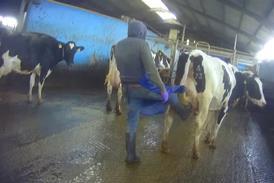






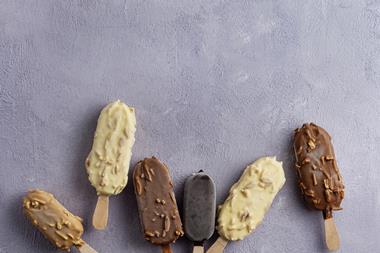
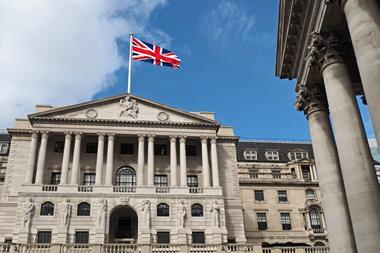
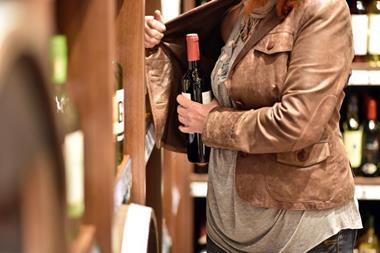
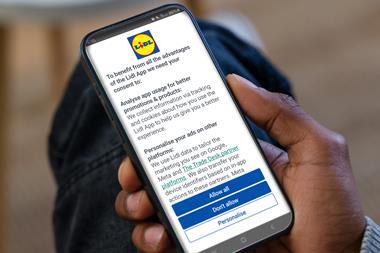

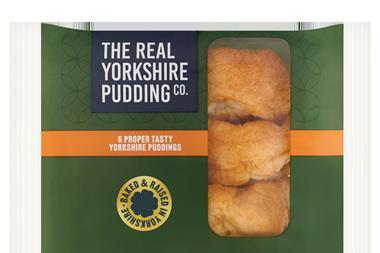
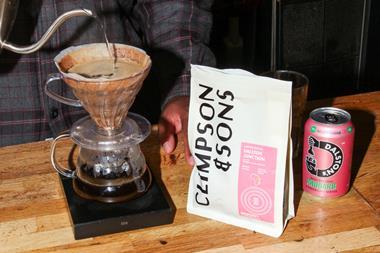

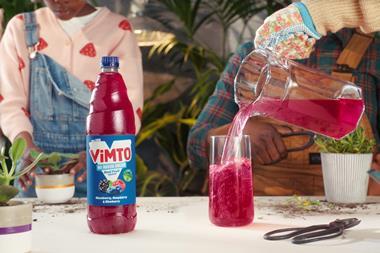
No comments yet